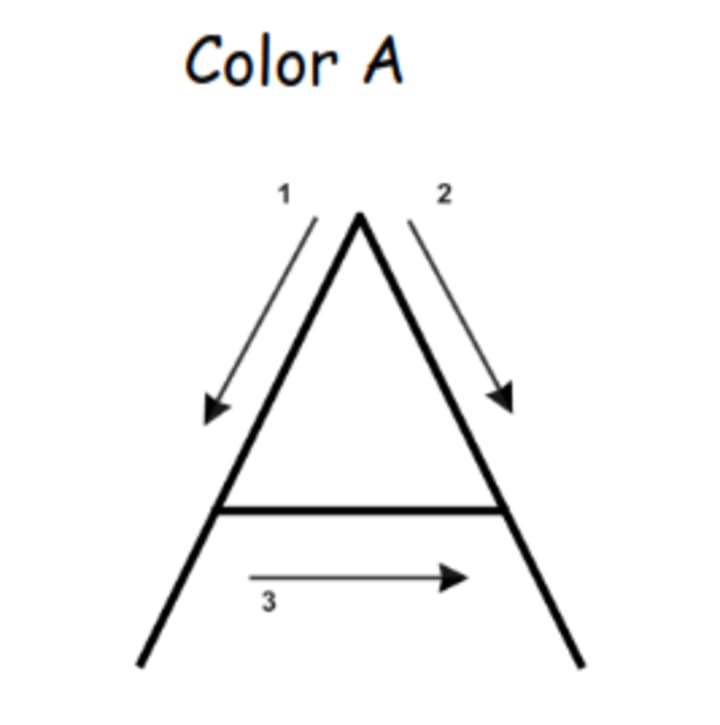Tracing Letter "A" - Scaffolding Learning
Tracing will help children to transition from tracing the letters to writing those letters independently.

This is an assessment task in the EDUC 231 Child and Adolescent Development. The assessment is all about tracing letters with help from the teachers through scaffolding.
Tracing will help children to transition from tracing the letters to writing those letters independently. Tracing letters is the fastest and easiest way for children to learn their letters that is an important precursor to freehand writing. Before children are able to write letters on their own, tracing letters is a great way for them to learn the basic form of each letter.
Differentiating writing instruction for a population of diverse learners may sound difficult; but, it does not have to be. Scaffolding is one process that allows teachers to organize a writing activity systematically to meet the needs of all students.
Scaffolding allows the teacher to help students transition from assisted tasks to independent performances. It is a step-by-step process that provides the learner with sufficient guidance until the process is learned, and then gradually removes the supports in order to transfer the responsibility for completing the task to the student.
For scaffolding to be successful, a foundation or organized procedure must first be developed. As a teacher, we must provide our students with the optimal amount of support necessary to complete the task, and then progressively decrease the level of assistance until the student becomes capable of completing the activity independently.
For me as an educator, it will allow for frequent intervention and guidance; uses response time more effectively; facilitates student familiarity with the final draft; enables quicker and more efficient grading.


Here are the steps for tracing the letter “A”
Step 1: Connect the dashed line starting from the top to bottom to draw a left diagonal line.
Step 2: Connect the dashed line starting from the top to bottom to draw a right diagonal line.
Step 3: Connect the dashed line starting from the top to bottom to draw a horizontal line.
“Scaffold”
1. Identify the child’s dominant hand (the one they write with).
2. Direct the child to hold the pencil firmly between his thumb and index finger, resting it on his middle finger for support. The arrows indicate the proper and easiest construction of the letter.
3. Then, as your child traces a letter A, call out the number of the step by saying,
4. Lift up the pencil and put the tip back at the top of the line,” and wait for your child to do it.
5. For the left diagonal line, the adult will guide first, he/she will trace the first dashed line from one end to another and then wait for the child to do it.

6. If they need help doing it independently, you can gently guide their hand.
7. Let the child trace the second dashed line from one end to the other end until reached the last dashed line.
8. For the right diagonal and horizontal line, let the child do it independently, you can gently guide their hand if needed.


9. Let the child trace the whole letter “A” from one end to the other end until reached the last dashed line.
10. Direct the child to trace again the left & right diagonal then the horizontal line to complete the letter “A” on his own.
11. The trick to completing a tracing letter is to ensure your child traces over each dashed line in the correct order.

Like what you read?
Don't forget to please like my story.
Thank you.
About the Creator
Domingo Añasco-Gaces Samontina, Jr.
.Professional Member of the Mechatronics and Robotics Society of the Philippines
.Certified Documented Information Controller with TUV Rheinland Qualifications
.Master of Science in Engineering (on-going) with Professional Teacher Certificate
Enjoyed the story? Support the Creator.
Subscribe for free to receive all their stories in your feed. You could also pledge your support or give them a one-off tip, letting them know you appreciate their work.






Comments
There are no comments for this story
Be the first to respond and start the conversation.